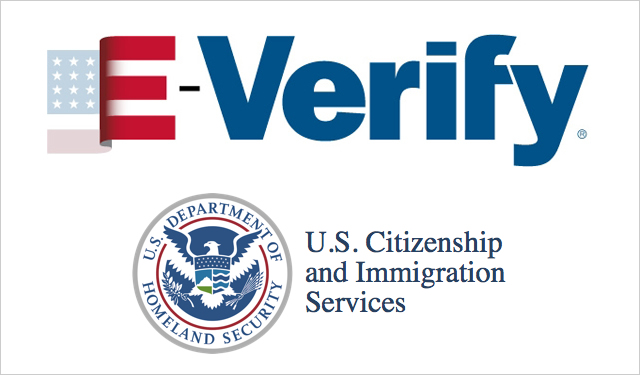The open-borders Cato Institute is back to attacking the federal E-Verify employee-vetting program, asserting that it “let 12 million illegal hires happen since 2006.”
Cato bases its claim on a shaky statistical model and a dubious hypothesis: “If the system worked, it should deny applicants roughly in proportion to the illegal share of the labor force.”
The libertarian think tank doesn’t justify its assumptions or identify a single illegal alien who allegedly slipped through E-Verify. Such details are unnecessary inconveniences for an outfit that reflexively opposes immigration enforcement laws.
“For Cato’s globalist vision to succeed, there can be no limitations on who American employers hire,” observes Ronald Mortensen of the Center for Immigration Studies. “If Cato had its way, the I-9 form, which verifies a person’s eligibility to work in the United States, would be abolished.”
“Adding E-Verify to the mix is too much for Cato since it catches the vast majority of people lying and perjuring themselves on their I-9 forms. It turns a wink-wink system into a true verification system. So, in order to prevent the widespread use of E-Verify, Cato has to try to discredit it,” Mortensen says.
After long complaining that E-Verify was an onerous burden that impedes the hiring process, Cato is taking a different tack – that it isn’t catching enough bad actors. Because E-Verify rejection rates don’t match Cato’s estimated ratio of illegal alien job seekers, the researchers glibly conclude that the program doesn’t work.
This is simplistic, and wrong. For starters, there is no way to know how many hires E-Verify stopped through deterrence.
“Just letting potential employees know that E-Verify is being used stops illegal aliens, deadbeat dads and criminals of all kinds who routinely use fraudulently obtained documents from even applying since they know their forged documents will be rejected by E-Verify,” Mortensen notes. “Therefore, the number of rejections declines precipitously once the word gets out that an employer is using E-Verify.”
Cato compounds its error by illogically blaming the system for failing to block hiring where it wasn’t even used. Researchers ought to have consulted an Arizona study showing how that state’s comprehensive E-Verify law reduced the illegal-alien population there.
Cato was similarly clueless with its earlier claim that E-Verify incorrectly categorized 54 percent of illegal workers as work-authorized. Setting the record straight, a government audit found just 1.8 percent were missed.
What other federal program has only a 1.8 percent error rate? Moreover, such oversights can be attributed to a system that references Social Security’s database and other official records.
Cato stumbles on the truth by concluding: “Overall, E-Verify may have made illegal employment slightly more difficult, but not nearly enough.” Indeed.
Some 750,000 U.S. businesses use E-Verify, but there are 28 million companies across the country. Even that paltry 2.7 percent participation rate is a bit too rosy.
A recent U.S. Immigration and Customs Enforcement raid at a Dallas tech company revealed that the firm utilized a staffing agency to hire hundreds of illegal aliens. While CVE Technology was enrolled in E-Verify, its contracted employment agency was not. This corporate shell game is not uncommon.
As long as E-Verify compliance is not mandated nationwide, employment screening will remain as haphazard as Cato’s sketchy research. States that don’t require employers to use the vetting program will continue to attract low-wage illegal labor – which, of course, is Cato’s chief objective.





1 Comment
EVerify is Dead
IMO unless the Social Security Agency and the Banks [Credit Agencies too] stop using duplicate Social Security Numbers in accounts and home loans…